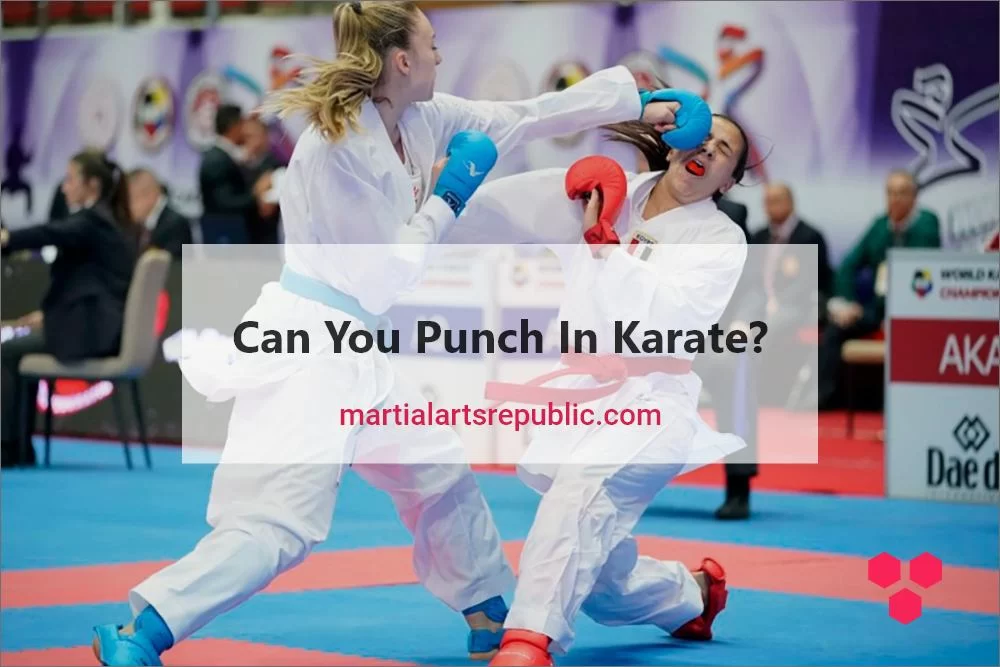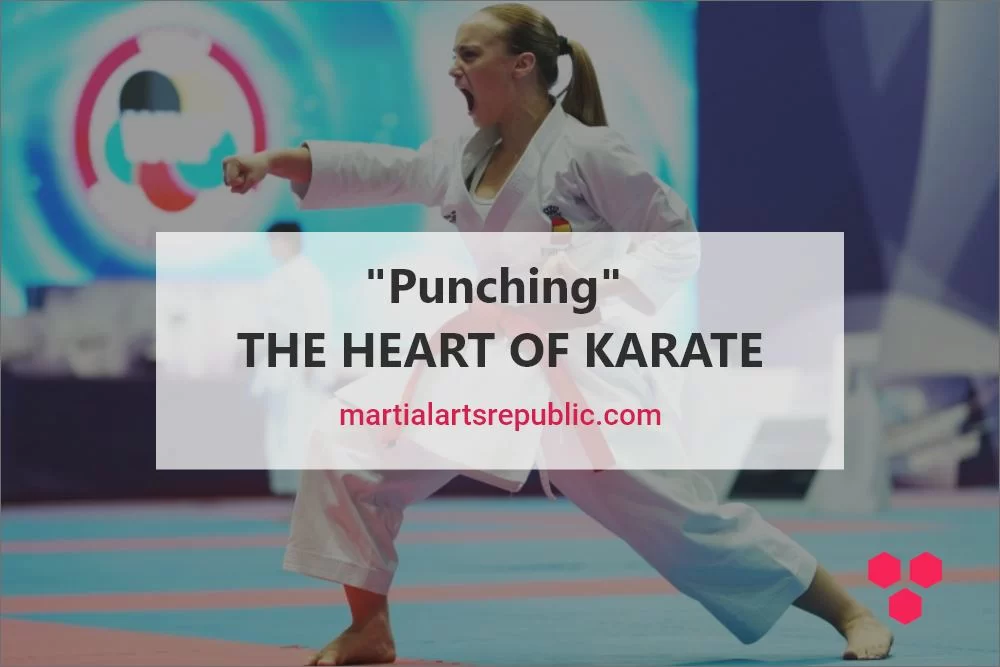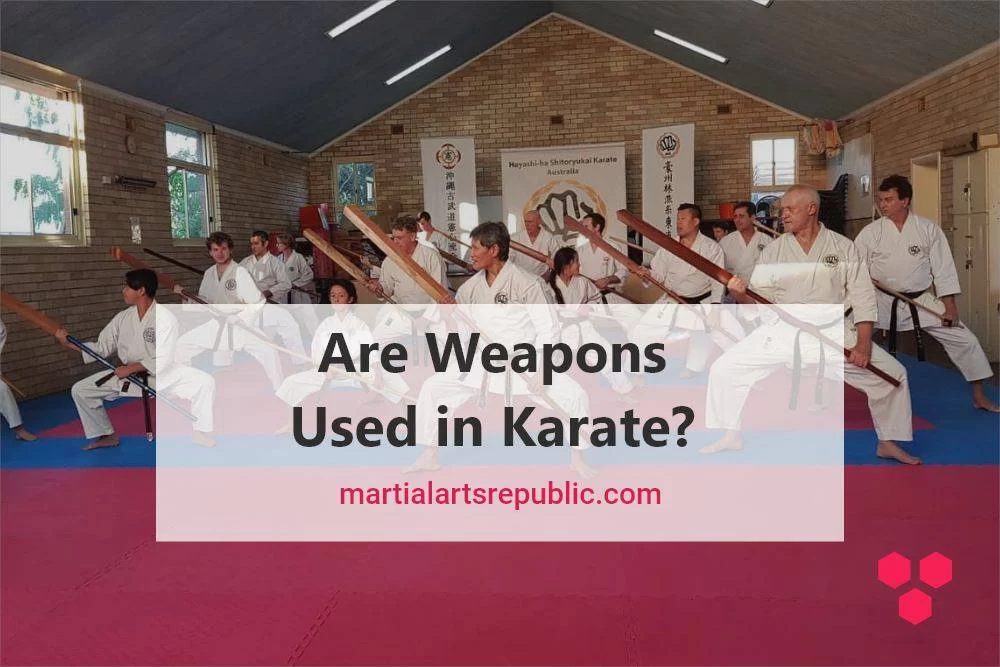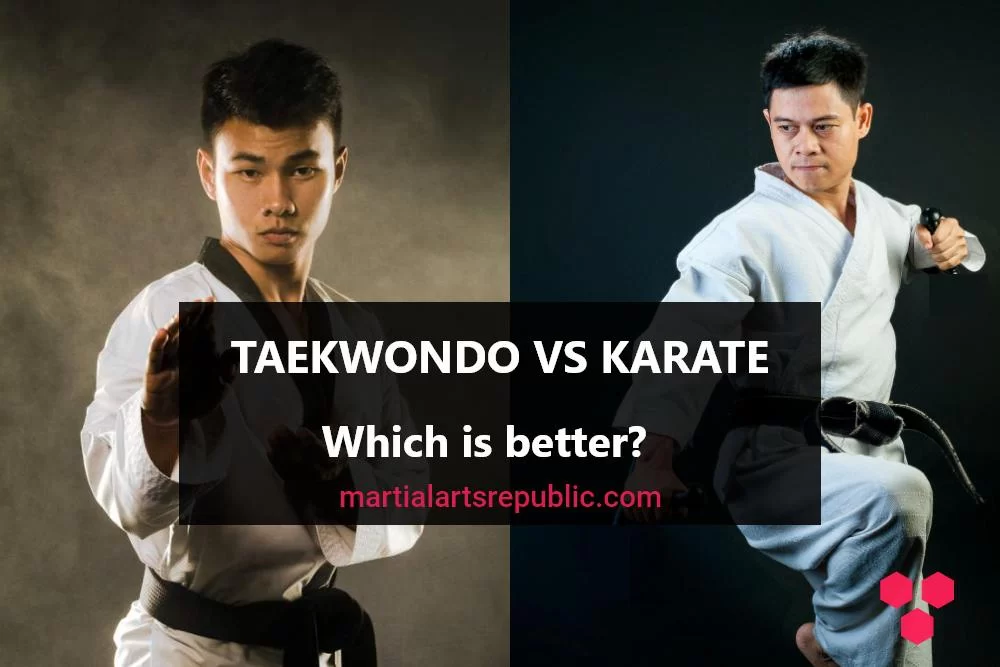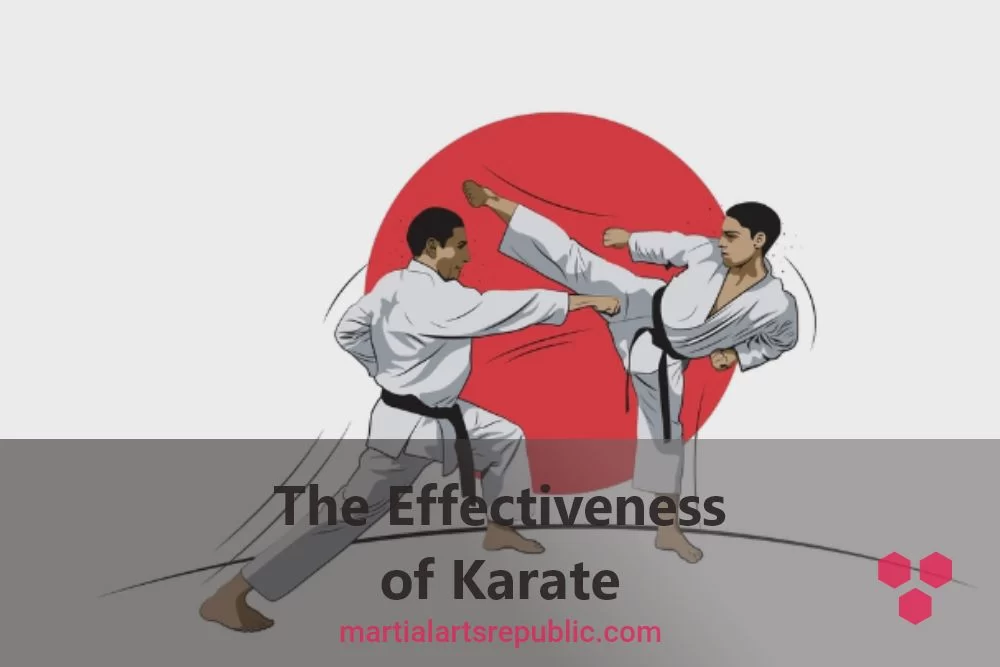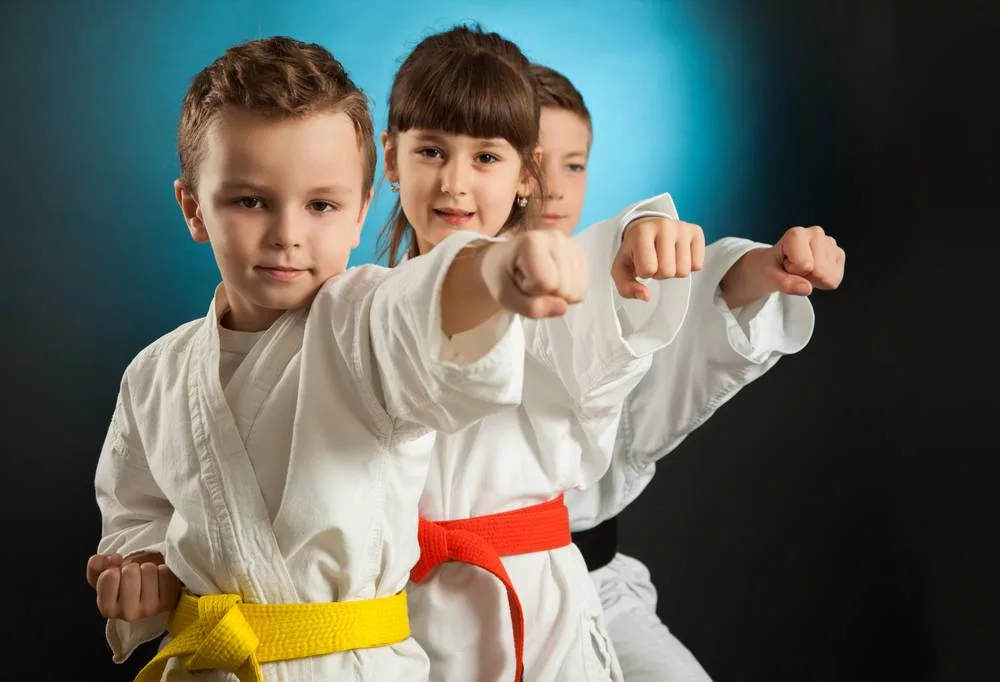Kata is one of the three major divisions of karate training. The other two are kihon (basic techniques), and kumite (sparring).
In this post we shall be looking at what a kata is and where it came from, kara names, the importance of kata practice in karate, as well as how kata practice improves both mind and body.
What Is Kata?
A kata is a choreographed routine of sequential techniques performed along specified lines of movement, in which you defend yourself against multiple imaginary opponents.
A kata kind of looks like a gymnastics floor routine using punches, kicks, strikes, and blocks instead of tumbling.
It also resembles complicated dance sequences, which is why kata is called “dances of death.”
Each kata is a unit within itself, and each is designed to practice and demonstrate specific body movements.
Some kata is slow and graceful, with long, sweeping movements, while others are fast, with short, hard movements.
Some are designed to practice the expansion and contraction of specific body muscles, and some are designed to practice control of breathing.
All the kata practiced for competition by the major Japanese karate organizations have one ultimate test of correct performance: The point at which you begin must be the same point at which you finish.
In karate kata, regardless of style, you can almost always sense beauty, coordination, and grace.
Origin of Kata
Each of the major styles of Japanese karate has its roots in the old forms of Okinawate, the Okinawan fighting arts that were formulated largely from Okinawan and Chinese systems of combat.
In its early stages of development, Okinawa-te was a system of all-out combat.
There were no sport competitions—each encounter was a matter of life and death.
As the systems became more stylized, the masters developed routines of self-defensive and symbolic movements to provide an avenue of practice for the trainee without actual combat.
These routines, in turn, became highly stylized within each school and came to be known as kata, which means “form” or “formal exercise.”
Karate Kata Names
Every style of karate practices a unique set of kata, and most styles of karate have several katas in common with each other.
Counting all the traditional styles of karate, at least 60 kata are practiced regularly.
Counting the smaller, lesser-known styles, there probably are more than 100 kata in existence.
And even though there are many forms of kata in existence, 102 katas are approved by the World Karate Federation and are performed at recognized WKF- events.
To keep it all straight, each kata has a name, and the names most often indicate something about the nature of the kata.
- Heain, for example, means peaceful and is derived from the idea that people who have mastered the Heain kata are capable of defending themselves in all normal situations and, therefore, have peaceful minds.
- Jutte means “10 hands,” indicating that mastery of the kata will give you the strength of 10 hands.
- Tekki (“horse riding” or “iron horse”)
- Gankaku (“crane on a rock”)
- Empi (“flying swallow”), and
- Hangetsu (“crescent”)
They are named for the resemblance of their distinctive movements to commonly observed objects and actions.
Jion, on the other hand, is the name of a temple where some people think the kata came from.
Bassai (“to penetrate a fortress”) is typical of a kata whose name creates an image of the kind of overall movement seen in the kata.
The idea of penetrating a fortress conjures up an image of charging, driving, and sweeping attacks, and that’s what the techniques of Bassai look like.
Still, other katas are named for people, such as Kushanku, and some are named for the number of steps or techniques or directions they have.
Some examples of those types of kata are Niseshi (“24”) which has 24 distinctive stepping motions; Gojushiho (“54 steps”); and Hyakuhachiho (“108 steps”).
That’s a really long kata though as most katas have somewhere between 25 and 45 movements.
Physical Kata Training
Because kata encompasses so many of the physical techniques of karate, they are invaluable to students and masters alike.
Kata is the very essence of all karate training.
They are the most effective way of practicing by yourself, and they are unsurpassed as physical conditioning exercises.
The best way to develop the muscles needed for a particular technique is to practice the technique itself, and kata forces you to do just that.
By regularly practicing kata, you will develop strength, agility, coordination, and control over your body because the kata techniques are performed in many different directions and with highly varied timing.
When trying to learn a new kata, try to view the kata in its entirety.
Then, following the movements of a leader, perform the kata slowly several times.
You’ll probably have to break it down into smaller segments and gradually add more movements as you memorize the pattern.
This will give you a feeling of the general direction and timing of the kata.
When you have the direction and timing more or less memorized, you can start giving attention to the individual techniques, and you’ll find yourself growing stronger in the kata each time you practice it.
From the beginning, it’s important that you understand the meaning of each movement in the kata and imagine that opponents are actually attacking you as you perform the movements.
After all, you want the kata techniques to work in a real emergency.
As you progress through the ranks and learn more kata, you should not practice one kata exclusively and disregard the others.
A well-rounded knowledge of all the kata is essential for a well-rounded understanding of the techniques of karate.
Mental Kata
Training Kata practice is excellent for developing continuity between the actions of the mind and the actions of the body.
Serious kata practice can actually provide you with solutions to certain problems—solutions that otherwise you might not find.
For example, in karate, you are expected to be bold and confident, and at the same time humble and gentle.
Under stress, you are expected to display a calm and steady demeanor.
These things are very difficult to learn just through sparring alone because when you spar with an opponent of greater skill, it’s very easy to display humility and gentleness, but very difficult to be bold and confident.
On the other hand, when you face an opponent of much lesser skill, it’s easy to be bold and confident, but overwhelming your opponent doesn’t teach you anything about humility and gentleness.
In kata practice, though, you always control the opponent.
You create him, you make him do what you want him to do, and you make him do things that you wouldn’t want an actual opponent to do to you.
Using your imagination, you can make the opponent bold or shy, strong or weak, fast or slow, and you can learn how to deal with many different kinds of opponents.
When you face an actual opponent, there’s no time to stop and think and feel what should be happening in your body and mind.
In the kata, however, you can do all these things because you are sparring with your own imagination.
You face whatever your imagination creates, and you can face a devastating opponent again and again, suffering defeat without damaging physical effects.
And if you keep facing that opponent repeatedly, you might eventually defeat him.
The sense of accomplishment and overcoming of fear derived from this type of training is stored in your intuition and memory and can be called into action in an actual combat situation.
You can take this very seriously if you remember that fear of an opponent does not lie in the opponent or his actions, but only in the mind of the one who is afraid.
That would be you. Fear is similar to imagination—with discipline, you can learn to chase it away.
So, be serious in your kata practice, and use your best imagination to create and deal with vicious opponents.
If you are conscientious about training this way, your sparring will become an extension of your kata.
Remember that what you face in your imagination is stored in your intuition and memory, and you can bring it out to deal with an actual opponent in sparring.
In fact, if you’re very serious about it, the biggest things you will have to learn from sparring are timing and distancing, and even those will be easier to learn from a position of physical strength—the physical strength you will gain from practicing kata.
Kata and Kinesthesia
The kinesthetic sense is the movement sense.
It’s the sense that tells you whether you are right-side up or upside down.
Even with your eyes closed, you are aware of your body’s movement because sense organs in the muscles, tendons, and joints respond to movement just like the eyes respond to light.
Your eyes interpret light in terms of light, shadow, color, hue, and intensity, and your kinesthetic sense interprets movement by sensing tension and relaxation in your muscles, balance, posture, and position.
Each sense has its own set of corresponding art forms that use the materials of that sense as their media.
The auditory (hearing) sense has a corresponding art form— music—whose medium is sound.
Similarly, one of the kinesthetic sense’s corresponding art forms is karate, whose medium is movement.
In any art form, learning a technique centers on gaining mastery of the instrument and the medium.
So, in music, you learn to control the instrument to produce subtle variations of sound, and you learn to hear in a highly sensitive manner.
In karate, the body is the instrument, and movement is the medium, so karate training centers on gaining control over the body and its movements.
The main elements of the movement are space, time, and energy; if you practice karate, you will be able to feel these things in a highly sensitive manner.
Movement is the main material of karate, and kata practice is the best way to turn your body into an instrument of the art of motion.
More than any other part of karate training, kata practice helps you develop feelings of movement, time, space, and energy, and the feelings that you develop by practicing kata can help you in every other physical activity that you engage in.
Kata puts you in touch with your body.
The Elements of Kata
To fully appreciate the complexity of kata performance, it is important to know what the underlying elements of good kata performance are.
The Terms You Need to Know
Here are some of the terms that are used for different elements of performance in the dojo and competition.
- Rei is a ceremonial bow performed at the beginning and end of each kata. It is performed in musubi dachi (attention stance, heels together, toes pointing outward). Throughout the bow, keep your eyes fixed straight ahead. The bow is used to signify respect for one’s opponents and symbolizes one of the most famous sayings in karate: “Karate begins with courtesy and ends with courtesy.”
- Kamae is the yoi, or ready posture, from which the fist movement begins. The purpose of kamae is to show the opponents a state of relaxed awareness. In karate kamae, breathe slowly in the lower stomach and concentrate on building your fighting spirit.
- Zanshin is the perfect finish of the kata and literally means “remaining mind.” When you finish the kata, you must not relax your concentration. Your spirit, mind, and concentration must remain until you complete the ending bow.
- Kiai is a shout from the abdomen that occurs once or twice during the kata. Its purpose is to indicate the climax of a series of movements and to help tense the body muscles through the contraction of the diaphragm and the forceful expulsion of air.
- Embusen is the performance line of the kata. Basic kata follows a line on the floor that is like a large “I” or “H.” All movements are performed on these lines or at specific angles to them. Advanced kata, of course, follows much more complex lines of movement.
Kata’s Big Three
Three important technical points apply to every kata:
1. Power control
Each kata is different and is designed to demonstrate and practice different aspects of body movement, so it is very important to understand where and how to apply proper strength and power in the kata. The movements are not to be done with equal power; they are to be done with proper power.
2. Expansion and contraction of muscles.
This principle also involves proper expansion and contraction of body muscles in the proper order. The kata is very dynamic and complex, and its performance of them must be fluid and smooth. Improper tension and relaxation will make the movements jerky and unbalanced.
3. Speed and rhythm control.
Each kata has a different rhythm; while some movements are performed slowly, others are performed very fast. Proper control of speed and rhythm is essential to the performance of each kata.
To really make your kata performance shine, you need to work on these points, too:
➤ Eye intensity: A strong gaze will indicate strong concentration.
➤ Attitude: Your attitude should be serious and intense.
➤ Deportment: You should display an air of dignity and a sense that the kata you are performing is important.
➤ Position and posture: Your posture should be erect and relaxed to indicate good body control.
➤ Continuity from one technique to another: The kata should be smooth and flowing, not jerky.
Do Kata Techniques Work?
Yes, they do. Each and every movement of each and every kata has a practical meaning and a self-defense application.
However, because no single, universal standard defines the precise meaning of each kata technique, practical interpretations of the techniques vary widely.
One person might look at a downward blocking motion in a kata, for example, and see a downward block against a front kick.
Another person might see a downward bottom fist strike against a wrist grab.
Still, another might see the windup for the block as a sweeping forearm block against a punch.
So, who’s right? They all are. The meanings of the techniques in the kata have been handed down from generation to generation orally, for the most part, so there is no real way to be sure of the meanings intended by the originators of the kata.
To make things even more complicated, several katas are clearly copies of old Okinawan folk dances, which means that they might not even have been related to actual combat techniques in the beginning.
The best thing for you to do is to listen to your instructor and ask questions about the meaning of each movement.
The final answer is this—the meaning of each kata technique is whatever your instructor tells you it is.
Who Founded Kata?
Today, nobody founded kata. The kata has been handed down, some for several hundred years from generation to generation, and they are highly revered links to karate’s origins.
Many of them were created by people who actually had to defend themselves against repeated violent attacks, and it would be hard to duplicate that experience today.
Most of the kata practiced today in Okinawan and Japanese karate can be traced (at least, their roots can be traced) to the late 1600s and early 1700s.
There have been many changes to the kata over the years, of course, but most of them are still recognizably linked to their old predecessors.
In the years when Okinawa-te was being created, kata was created along with it.
Also, it appears that many katas were imported to Okinawa from China.
As the techniques of Okinawa-te progressed, more kata was created, and more were modified.
When karate became available to the public around 1900, though, the various styles organized themselves in a logical fashion so that karate-ka could present their art to the public in a coherent way.
When that was done, the kata of each system was pretty much set in stone; although there have been some modifications to the kata, since then, very few new katas have been created.
Conclusion
Kata is a choreographed sequence of techniques handed down from the past, and it is a practice that greatly enhances both physical and mental abilities.
All kata techniques have practical self-defense applications, and mastering them can also improve your performance in all other sports and physical activities.
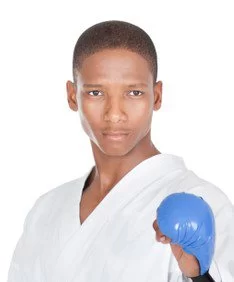
Hi, my name is Godwin. I am a passionate martial artist with black belts in Taekwondo and Karate. I have over 15 years of martial art experience. I created this platform to enable me to help you learn martial art the right way.

